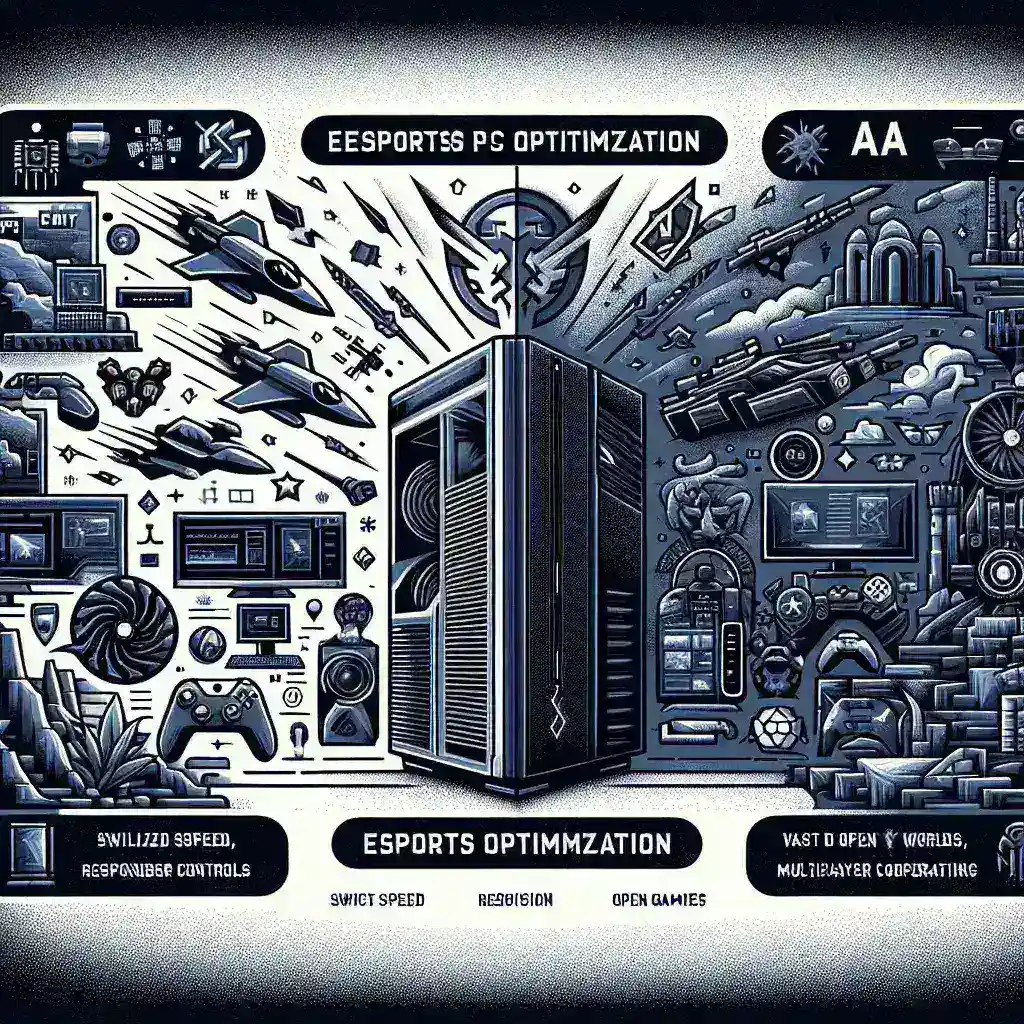How do gaming PCs optimize for eSports titles differently from AAA games?
The landscape of gaming has evolved drastically over the past decade, with titles falling into two major categories: eSports and AAA games. Both types of games demand high-performance gaming PCs, yet they require different optimization approaches. This article explores how gaming PCs are optimized for eSports titles differently from AAA games, considering factors such as hardware configurations, performance tuning, and user preferences.
Hardware Requirements
eSports titles and AAA games have distinct hardware requirements due to their differing priorities and gameplay mechanics.
| Component | eSports Titles | AAA Games |
|---|---|---|
| CPU | Mid-range | High-end |
| GPU | Mid-range | High-end |
| RAM | 8-16GB | 16-32GB |
| Storage | SSD for quick load times | SSD + HDD for large file sizes |
| Cooling Systems | Standard air cooling | Advanced liquid cooling |
CPU and GPU Considerations
eSports titles usually emphasize higher frame rates, requiring CPUs with higher single-core performance and GPUs capable of delivering smooth visuals without necessarily being top-of-the-line. In contrast, AAA games often push the graphical envelope, demanding high-end CPUs and GPUs to handle intricate details and expansive environments.
RAM and Storage
eSports games generally require around 8-16GB of RAM, while AAA titles benefit from 16-32GB to accommodate detailed textures and complex game physics. eSports titles also favor SSD storage for quick load times, whereas AAA games might necessitate a combination of SSD and HDD due to their larger file sizes.
Performance Tuning
Performance tuning for gaming PCs varies significantly based on the type of game being played.
Graphics Settings
For eSports titles, gamers often lower graphics settings to prioritize frame rates and responsiveness. This approach reduces the graphical workload on the GPU, ensuring smooth gameplay. Conversely, AAA game players generally maximize graphics settings to experience the game’s full visual fidelity, emphasizing texture quality, lighting, and effects.
- eSports: Low to medium graphics settings for optimal performance.
- AAA Games: High to ultra graphics settings to exploit the game’s visuals.
Latency and Responsiveness
In eSports, low latency and high responsiveness are critical. This means optimizing network settings, using high-refresh-rate monitors, and fine-tuning input devices for minimal delay. AAA games focus more on immersive storytelling and experiences, where the emphasis is less on competitive responsiveness and more on visual and narrative richness.
User Preferences
User preferences play a crucial role in how gaming PCs are optimized for eSports and AAA games.
eSports Gamers
eSports players prioritize performance, often opting for lower settings to gain a competitive edge. They may also invest in specialized peripherals like mechanical keyboards, high-DPI mice, and gaming headsets designed for clear audio communication.
AAA Game Enthusiasts
AAA game enthusiasts, on the other hand, seek immersion and visual detail. They might invest in high-resolution monitors, surround sound systems, and VR setups to enhance their gaming experience.
Conclusion
The optimization strategies for gaming PCs diverge significantly between eSports titles and AAA games. While eSports gamers focus on maximizing performance through mid-range components and low-latency configurations, AAA gamers prioritize high-end hardware and graphical fidelity. Understanding these differences is crucial for building a gaming PC that meets your specific needs.

